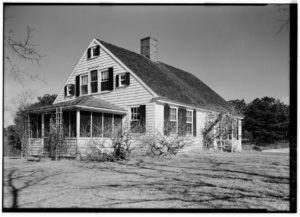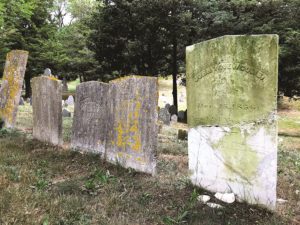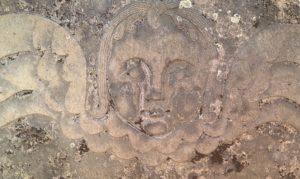Even before there was a written Wellfleet history, there were Wellfleet oysters. We know that indigenous peoples savored them raw, smoked, roasted, steamed, and dried, because of the massive shell middens they left behind.
In 1606, French explorer Samuel de Champlain named the area le Port aux Huîtres (Oyster Harbor) after encountering reefs of wild oysters so large and dense that they posed a hazard to navigation. By 1670, when the area was known as Billingsgate, Wellfleet oysters were being harvested commercially and shipped to Boston, Salem, and Portland. For a century, the town boasted a lucrative, self-sustaining oyster industry until, by the Revolutionary War period, the wild beds had been overharvested and depleted. To reinvigorate the industry, oystermen turned to importing and “planting” seed (spat) to “salt-up” and fatten in the voluminous tides of Wellfleet Harbor. By the early 1800s, the oyster industry was booming again and continued to thrive for most of the 19th century.
In the midst of that renaissance, naturalist Henry David Thoreau embarked, in October 1849, on the first of several visits to Cape Cod. His keen observations of the landscape and its people were originally published as magazine articles, and in 1865, three years after his death at age 44, his essays were compiled as Cape Cod. In time, his meditations on the poetry, philosophy, and spirituality — even the bleakness — of the “bare and bended arm” became a classic of American literature.
The book introduces readers to the various folks who hosted Thoreau and his travel companion overnight, among them the “old Wellfleet oysterman, who had acquired a competency in that business, and had sons still engaged in it.” Then a man of 88, the oysterman lived with his 84-year-old wife and several other family members in a “sober-looking” house along the shore of a chain of ponds. Thoreau does not name him, but that host was John Young Newcomb, born in Wellfleet in 1762 to William Newcomb (1727-1795) and Vashti (Vasty) Cole (1727-1806).

Newcomb’s roots ran deep in Wellfleet. He told Thoreau that his great-grandfather, Thomas, had arrived from England. In truth, it was Thomas’s grandfather, Andrew, who had arrived from England. Thomas had been born in Edgartown (or possibly Kittery) but had been married in Eastham in 1693 to Elizabeth Cook, a descendant of Mayflower Pilgrim Stephen Hopkins.
John Young Newcomb’s grandfather Simon (1699-1778), the son of Thomas and Elizabeth, farmed land in that part of Eastham that was set off as Wellfleet in 1763. A portion of Simon’s land was bequeathed to his son William, who, in turn, gave half to his son, John Young Newcomb. On Jan. 20, 1785, John Young Newcomb married Thankful Freeman (1766-1856), the daughter of Isaac Freeman and Thankful Higgins. Five children were born to the couple. Both John Young Newcomb and his wife, Thankful, along with three of their children and other family members, including John’s parents, are buried in Wellfleet’s Duck Creek Cemetery, once known as Old Town Cemetery.
As sands silted in Wellfleet’s “western islands” — Bound Brook, Griffin, and Great — the town’s industry and population shifted to Duck Creek, site of the second meetinghouse of the First Congregational Church, replacing the original meetinghouse built at Chequessett in the 1720s. Work began on the Duck Creek meetinghouse in 1735 and was completed by 1740. Expanded and repaired over the years, it served the congregation until a new meetinghouse was built in the village in 1850. In the old Duck Creek burial ground, the earliest identified grave, belonging to Elisha Eldredge (b. 1653), dates to 1739.

A Newcomb family genealogy published in 1923 identifies John Young Newcomb as a sea captain living on a large farm at the edge of Williams Pond, which Thoreau referred to as Swett’s Pond. Like his father, Newcomb had numerous business interests, owning shares in the schooner Lydia and in Freeman’s Mill, just north of Perch Pond. He was a pew holder in the Congregational Church and a charter member of the Adams Masonic Lodge.
Thoreau clearly enjoyed his conversations with John Newcomb, styling them as “coarse and plain enough to have suited Rabelais.” The sea clam is not easily obtained, Newcomb mused, and ice never formed on the back side of the Cape but sometimes, in winter, “when the tide was down, the beach was frozen, and it afforded a hard road up the back side for some thirty miles, as smooth as a floor.”
The old man told his stories, Thoreau wrote, “with his back to the chimney, and ejecting his tobacco juice right and left into the fire behind him, without regard to the various dishes which were there preparing.” Expressing a taste for the beach-pea (Lathyrus maritimus), edible when young, Newcomb noted that he had seen it growing abundantly in Newfoundland. To which Thoreau supposed, rightly, that Newcomb had been a voyager. Newcomb acknowledged that “he had been about the world in his day,” once considering himself a “pilot for all our coast.” As a boy Newcomb had heard the thunder of cannon from Bunker Hill across the bay, and toward the end of a long life, a year before Thoreau’s visit, he had witnessed the full-rigged Franklin, carrying passengers and cargo from England to Boston, wreck at Newcomb Hollow with a tragic loss of life.

John and Thankful outlived three of their five children. By the end of 1856, both John and Thankful had passed. Just a few months earlier, numerous Boston newspapers had printed a dispatch titled “Longevity,” noting that Mr. John Y. Newcomb of Wellfleet, the father of veteran oyster dealer David Newcomb, is now living at the great age of 94 years and four months. His wife is also living, it noted, and is 91. “This couple have lived in the married state seventy-two years and seven months. They are worthy and respectable people, and have passed a prolonged life, of as much happiness as usually falls to the lot of mortals.”
This year, as Wellfleet pays virtual homage to its favorite mollusk, a visit to the Wellfleet Oysterman in the Duck Creek Cemetery may be a chance to reflect on the town’s culture and traditions and to hope for a better next year.
Author’s note: The cemetery is at the juncture of Route 6 and Cahoon Hollow Road. A small parking area can be accessed between Duck Creek Cemetery and the adjacent Lady of Lourdes Cemetery. The Wellfleet Cemetery Commission provides a list of inscriptions and a cemetery map on its website (wellfleet-ma.gov). The Newcomb graves are at the front before it begins to slope down.



